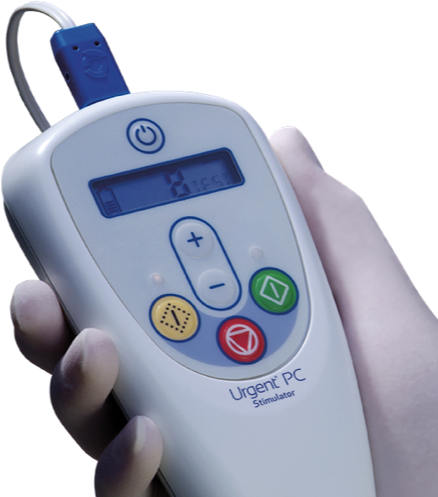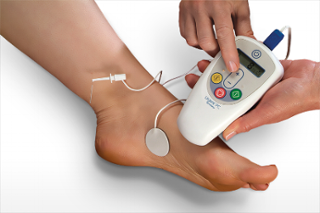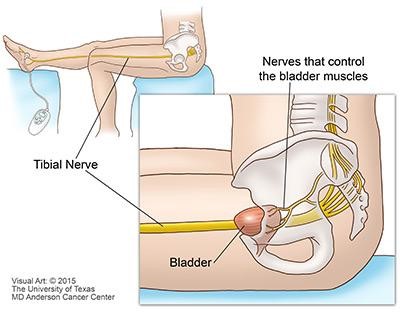Urgent® PC
Made by Laborie
www.cogentixmedical.com
Urgent® PC is a non-drug, non-surgical option for overactive bladder and symptoms of urinary urgency, frequency and urge incontinence.
Indications
PTNS is indicated for patients with overactive bladder who have tried conservative therapy and medications without significant improvement. Patients who have adverse, intolerable, side effects from medications are also good candidates for PTNS.

How it Works
Neuromodulation therapy is the name given to a group of treatments that deliver electrical pulses to nerves to change how they work. One of these therapies is PTNS. PTNS modifies the signals the bladder receives and processes in order to achieve improved bladder control. Using an electrode (small needle) inserted in the inner ankle electrical impulses are sent up the tibial nerve to “calm down” the signals coming from the sacral nerves which control your bladder. The nerves in the sacral plexus will stop “firing” so often which can decrease symptoms of urgency and frequency.


Expected Results
- Due to the way that PTNS works, it usually takes 5-7 weeks to see a change in symptoms. Patients report different time courses with improvement. No identifiable traits have been identified to determine who will respond early, late or respond at all to treatment. Therefore, it is important to receive all 12 recommended treatments to determine how well PTNS works. If successful, maintenance therapy likely will be necessary to maintain the improvement.
- Most studies report an improvement in incontinence (typical reduction 1-3 episodes/day), frequency (reductions of 2-5 episodes/day), nocturia (reductions of 1-2 episodes/night) and quality of life.
- Studies show that, on average, over 60% of patients have an improvement.
- PTNS works as well as antimuscarinic medications with a better safety profile.
Safety
Who should NOT be treated with PTNS?
- Patients with pacemakers or implantable defibrillators
- Patients prone to excessive bleeding
- Patients with nerve damage that could impact the tibial nerve or pelvic floor
- Pregnant patients or patients who may become pregnant during therapy
Common side effects
- Temporary mild pain, bleeding or skin inflammation at or near the stimulation site
